Sizes and types of film for lamination
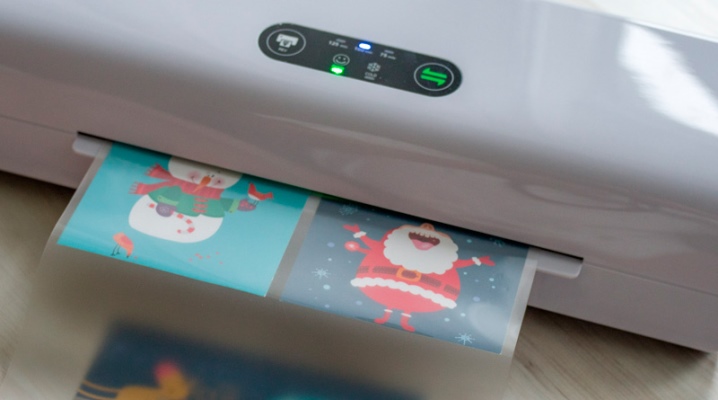
Having a clear understanding of the features of the sizes and types of lamination films, you can make the right choice of this material. Another important aspect is the correct use of such products.

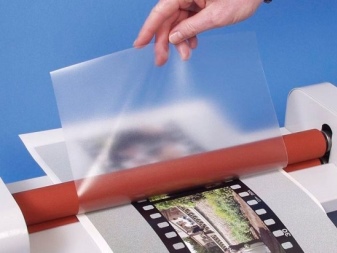
Features and characteristics
Laminating film is a very important type of material. This solution is designed to improve the appearance:
- packaging products;
- personal and corporate business cards;
- posters;
- calendars;
- book, brochure and magazine covers;
- official documents;
- promotional items of various types.



Of course, laminating film not only improves decorative qualities, but also protects paper documents, other printed and handwritten materials from various external influences. The advantages of this solution are:
- total absence of bad smells;
- complete environmental and sanitary safety;
- excellent adhesion;
- resistance to moisture and temperature fluctuations;
- protection from mechanical deformation.
Films for the laminator are produced using PVC or multilayer polyester. One edge of the product is always covered with a special adhesive. When not in use, the film has a cloudy appearance. But as soon as it is applied to any substrate, melting of the glue begins immediately.


The excellent adhesion of this composition leads to almost complete "fusion" with the treated surface.
The thickness of the lamination films plays an important role. There are known options such as:
- 8 microns;
- 75 microns;
- 125 microns;
- 250 microns.
This property directly determines the area of use of the product. The calendar, book cover (regardless of paperback or hardcover), business card, maps and atlases are recommended to be covered with the most delicate protection. For important documentation, for working manuscripts, lamination with a thickness of 100 to 150 microns is advisable. The layer of 150-250 microns is more typical for badges, various passes, certificates and other documents, materials that are often picked up.



Of course, the dimensions of the coating used also play an important role:
- 54x86, 67x99, 70x100 mm - for discount and bank cards, for business cards and driver's licenses;
- 80x111 mm - for small leaflets and notebooks;
- 80x120, 85x120, 100x146 mm - the same;
- A6 (or 111x154 mm);
- A5 (or 154x216 mm);
- A4 (or 216x303 mm);
- A3 (303x426 mm);
- A2 (or 426x600 mm).


It is worth noting that roll film has almost no dimensional restrictions. When feeding a roll through the laminator, even very long sheets can be pasted over. In the vast majority of cases, rolls are wound on 1 ”or 3” sleeves. Most often, a roll includes 50-3000 m of films of various densities. It should also be noted that the film thickness depends on the material used:
- from 25 to 250 microns for polyester (lavsan);
- 24, 27 or 30 microns can be a polypropylene layer;
- PVC film for lamination is available in thickness from 8 to 250 microns.


Materials (edit)
The film for lamination works can be made on the basis of polypropylene. This solution is characterized by increased softness and elasticity. There are both glossy and matte types of this material. It is possible, at the request of the consumer, to lamination on both sides or only on one side. PVC-based products are generally more resistant to ultraviolet radiation, plastic and can take their original shape even after prolonged rolling into a roll. Typically, PVC-based films have a textured surface. The main area of its use is street advertising. Nylonex is breathable and will not curl. When applied to paper, the underlying geometry will not change. Material such as Polinex is also quite widespread.
For branding purposes, it is designated by the letters OPP. The thickness of this material does not exceed 43 microns. Pressing is carried out at a temperature of 125 degrees. The soft and thin coating turns out to be quite elastic. Polinex is mainly used for roll films. Perfex is usually labeled PET. The thickness of such material can reach 375 microns. It is a tough and, moreover, almost perfectly transparent material. It provides an excellent display of printed texts.
The text may appear to be under glass; this solution is suitable for both a credit card and a souvenir edition.


Species overview
Matt
The good thing about this type of film is that it does not leave glare. It can be safely used to protect documents. You can leave an inscription on a matte surface and then remove it with an eraser. The print quality will be higher than when using “plain” paper without a protective layer. A matte finish will help preserve the original color saturation for a long time.

Glossy
This type of consumables is more appropriate not for documents, but for photographs. It allows you to more clearly show the outlines of images. This solution is recommended for posters, book covers. You can use it for other illustrated publications and items. Covering the text with a glossy film, however, is hardly a good idea - the letters will be harder to see.

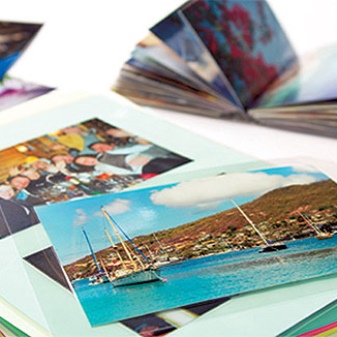
Textural
This is a great way to simulate sand, fabric, canvas, and so on. Some variants are able to reproduce the appearance of a pyramidal crystal, an original color image or a holographic image. The textured film will mask scratches that would be easily visible on matte and glossy finishes. It is not without reason that it is often used to decorate books and art canvases.
Roll laminating film can be up to 200 m in length. To use it, you just need to cut off a fragment of a suitable size. Therefore, such a coating is perfect for both large and miniature publications. The batch version, on the other hand, allows you to more flexibly vary the thickness of the covering layer. The increased density guarantees better protection than usual.


The film can also be hot or cold laminated. The use of increased heating makes it possible to apply a decorative protective coating to any substrate. The required temperature is determined by the density of the material used. The cold lamination film will be activated by the applied pressure. Homogeneous pressure with special rollers presses the cover tightly to the document, and from one edge it is sealed; such processing is possible even immediately after printing. Cold lamination films are a great option when you need to protect heat sensitive products. We are talking primarily about photographs and vinyl records.


But the same is true for a number of document types. The composition of the glue is selected in such a way that the adhesion occurs reliably. However, the same tightness as with the hot method cannot be achieved, and the cost of consumables will be very high. The hot technique involves heating to about 60 degrees or more. The thicker the sheet, the higher the temperature should be. Relatively thin films adhere well to the surface even with minimal heating.
You won't be able to process documents quickly in this way. It is also worth considering the high level of electricity consumption.

How to choose?
High-quality films for paper and documents are produced using coextrusion technology. This method allows you to get multilayer workpieces, and each layer in them is responsible for its own special function. Individual layers can be very thin (up to 2-5 microns). Good food usually contains 3 layers. Two-layer solutions are rare, but they cannot provide effective protection. The original bottom layer - the base - can be made of polypropylene. It is likely to have both a glossy and a matte surface. Polyester (PET) turns out to be a more versatile solution, more often used in bag products. Such a coating is suitable for application on one or two sides; the degree of transparency is very high.

Polyvinyl chloride film withstands ultraviolet irradiation. Therefore, it is recommended for active outdoor use. Texture coatings are made only on the basis of PVC. The nylon bottom surface uses substantially less BOPP and PET. Such a substrate will not curl, but its geometry may change when heated and cooled, making it suitable only for cold lamination. The intermediate layer is in most cases made of polyethylene. The adhesive mixture must exactly match the composition of the substrate and the second layer. For him, transparency and adhesion are important.
It is difficult to give preference to one or the other of these two properties - they both need to be at a decent level.
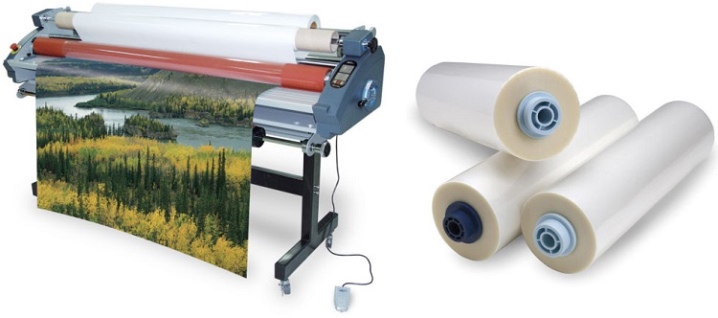
It is also important to consider the texture of the film. The optical effect depends on it. Glossy finish is preferable for various photographs and advertising publications. However, it will have to be protected from scratches. As for single-sided and double-sided lamination, the first type is only suitable for storing documents in an office or other controlled environment; by applying a coating on both sides, you can be sure of protection from moisture.
Elementary protection against moisture will be provided by polypropylene films with a thickness of 75-80 microns. This coverage is quite effective for office documents. Crumples and breaks are avoided when using thicker (up to 125 microns) polyester. It can already be used for business cards, diplomas and certificates. The densest coatings (175 to 150 microns) guarantee increased protection even in critical conditions.


Important: Ideally, you should buy a film for a specific model of the laminator. As a last resort, you should focus on products of the same price category as branded products. It should be understood that a number of Asian suppliers are saving on intermediate coats and using excessive amounts of adhesive. This can adversely affect the safety of the device and the effectiveness of its use. Inexpensive thin films are often made by applying the adhesive directly to the substrate; the reliability of such a solution is a big question. If a full-fledged solution is used, then the tear resistance is no longer 2, but 4 kgf / cm2. In addition, it is worth considering that the best products for lamination are made:
- ProfiOffice;
- GBC;
- Attalus;
- Bulros;
- D end K;
- GMP;
- Fellowes.



The film is formally of the same composition and size, supplied by different companies, may differ significantly. Both individual "secret components" and processing modes are affected. The look and feel of the touch does not allow us to judge quite fully the quality of the material. It is necessary to carefully study the reviews and recommendations of specialists. If it is very difficult to figure out what the thickness of the coating should be, you can focus on the almost universal indicator - 80 microns. Glossy transparent type of material - multipurpose. It can cover almost all types of office supplies.
As for special films, this is the name for products with the highest quality and additional functions. Textured or colored surfaces are ideal for color application. Such coatings can even be placed on a metal surface. Fotonex anti-reflective transparent film is praised for its extra UV protection. It can also have a pronounced surface texture. Important: in order not to doubt the safety of the product, you should check the presence of the UV marking.Self-adhesive laminates are valued for their suitability for even the most demanding jobs on any flat substrate. In the field of printing services, the Tinflex product is in demand, which has a density of 24 microns and gives images a slightly caught gloss.



How to use?
First of all, you need to turn on the laminator and put it in the required thermal mode. Hot lamination is usually set by moving the switch to the HOT position. Next, you will have to wait until the end of the warm-up. Typically, the technique contains an indicator showing when the device can be used. Only at his signal do they put film and paper into the tray. The sealed edge must be facing forward. This will avoid skewing. You can reliably compress materials if the film is 5-10 mm wider than the media. To return the sheet, press the reverse button. As soon as the process is completed, it is necessary to suspend the feed and allow it to cool from 30 to 40 seconds.


Cold lamination is even easier. This procedure is carried out when the switch is set to Cold mode. If the machine has just been hot, it should cool down. There are no other special differences in the procedure. But paper can be laminated with the most common iron. At home, it is more correct and most convenient to work with A4 sheets. It is also recommended to use a material of small thickness (up to 75-80 microns maximum). The iron is placed on a medium temperature level.
Important: Excessive heating will result in shrinkage of the film and the appearance of blisters. The paper sheet is placed inside the pocket and the assembly is slowly, carefully smoothed out from the junction of the film.


It is necessary to iron first from one, then from another turn. The matte surface will become more transparent. When the film cools down, its hardness will increase. Using a slip sheet of paper helps to prevent the material from sticking to the iron. If an air bubble occurs, it is necessary to wipe the still hot surface with a soft cloth - this will help if the protective layer simply did not have time to adhere immediately.
But sometimes this technique does not help. In this case, it remains only to pierce the remaining bubble with a needle or pin. Next, the problem area is smoothed with an iron. Cutting to exact dimensions can be done on a special stand. You can always buy it in a specialized stationery store.
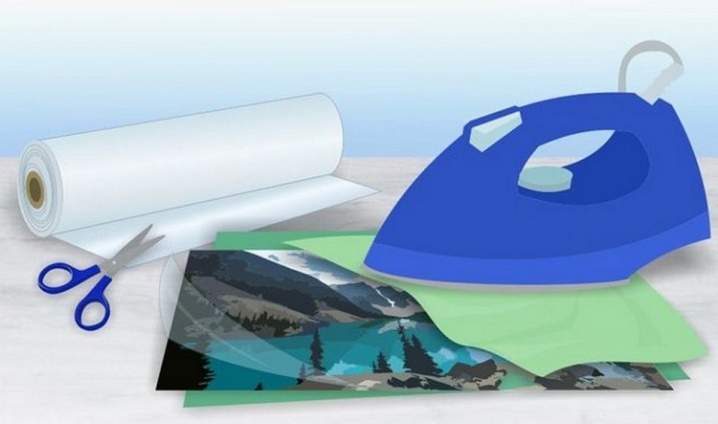
For information on how to choose the right film for lamination, see the next video.













The comment was sent successfully.